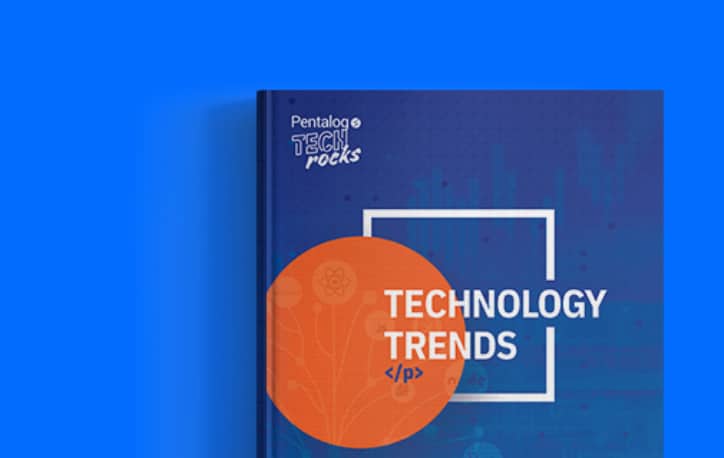Last Updated on November 24, 2025
A typical SMB[1] has an invoice duplication rate of 1.29%. That’s more than $12,000 in potential duplicate payments per month if each goes through.
Now scale that to enterprise-level organizations managing thousands of vendor transactions every month. The risk multiplies quickly, and so do the losses.
The right vendor matching software can eliminate that, but only if you know what to look for.
And that’s often the hard part.
Choosing a vendor matching platform isn’t as simple as comparing product sheets or feature lists. Every tool claims to deliver accurate results and clean data, but it’s only when you dig deeper that you realize how different they are in approach, usability, and outcomes.
How to Evaluate Vendor Matching Software?
Vendor data sits at the intersection of procurement, finance, and compliance. That means the software you choose should not only identify duplicates but also strengthen the integrity of your vendor master, reduce downstream errors, and deliver audit-ready accuracy across the organization.
When assessing potential tools, start with these guiding questions to evaluate how a vendor matching engine will actually perform in your environment:
- Can it adapt to your data complexity?
Matching clean, structured data is simple. But real-world vendor data is rarely like that. You need a solution that performs reliably across inconsistent, multilingual, and incomplete datasets.
- Can it scale with your organization?
What works for a few thousand records might not sustain millions. Scalability, both technical and operational, is essential for long-term ROI.
- Does it fit into your data management ecosystem?
A matching engine shouldn’t be an isolated tool; it can’t work efficiently that way. For best results, it must integrate with your vendor master, MDM, ERP, and AP systems to maintain a single, accurate supplier view across departments.
- How transparent is the matching logic?
Without explainability, you’ll always be second-guessing matches. The best tools let you see and tune the process, so you trust the results.
Factors to Consider When Selecting Vendor Matching Software
Here’s your 10-point checklist for evaluating vendor matching software and finding the right fit for your business:
1. Matching Accuracy
Vendor matching process may include many things. But at its core, it’s all about trust in results.
Every evaluation of vendor record matching software should begin with one question: how accurately can it recognize that two (or more) records belong to the same supplier?
A simplistic matching engine might miss small variations in records, which then drives up risk of duplicate payments, fragmented spend visibility, and supplier relationship issues.
What you want then is a system that can reliably identify duplicates across common issues like spelling errors, formatting differences, abbreviation use, or inconsistent naming conventions. This requires a mix of deterministic (exact match), probabilistic (statistical likelihood), and fuzzy (approximate string match) techniques.
If the software can’t catch that “Soluciones Integradas S.A.” and “Soluciones Integrales” or “Eastern Logistics Pvt Ltd” and “E. Logistics (Private) Limited” are likely the same, it’s not ready for enterprise use.
High-accuracy matching forms the foundation for every other capability in a system. Without it, even the best integrations or automation will deliver poor data downstream.
2. Rule Configurability and Threshold Control
Every organization defines a match differently. And that definition can change over time.
A good platform lets you build and adjust rules according to your criteria, without writing codes. You should be able to weigh certain fields more heavily in the match logic, create exceptions, or adapt logic as your data changes. For example, if your procurement team relies heavily on tax ID over address for supplier identity, the engine should let you reflect that easily.
Look for:
- Field weighting: e.g., give higher priority to tax ID than address
- Match threshold control: balance between false positives and false negatives
- Conditional logic: e.g., match only when country = US)
- Reusability of match definitions for different data segments
Rule flexibility is key to aligning the engine’s logic with your operational realities. Advanced platforms let you fine-tune thresholds to balance precision and recall based on your risk tolerance.
3. Real-Time and On-Demand Matching
Batch matching has its place, but businesses increasingly need real-time and on-demand results.
For example, when onboarding a supplier, procurement teams should instantly see whether that vendor already exists in another system.
Check if the software supports streaming or API-based or streaming matching, enabling real-time duplicate detection during transactions or integrations. This capability prevents duplication creation at the source and keeps downstream systems cleaner.
4. Data Preprocessing Capabilities
Matching is only as good as the data it runs on. Look for a vendor matching solution that cleanses and standardizes records before matching.
That includes trimming whitespace, normalizing cases, fixing punctuation mistakes, standardizing abbreviations, and resolving country or address formats.
Preprocessing can also involve entity parsing, i.e., breaking complex names or addresses into structured fields, which dramatically improves match accuracy.
Without strong preprocessing, even the smartest algorithm can misfire.
5. Handling of Multilingual and Semi/Unstructured Data
Real vendor data rarely follows neat patterns. It often contains abbreviations, foreign characters, merged fields, and non-standardized text. Global organizations also often have data in multiple languages, scripts, or formats, such as vendor names written in Chinese, French, or Arabic; addresses mixing Latin and non-Latin characters.
Your vendor matching software should be able to handle multilingual datasets, diacritics, and regional naming variations, as well as unstructured or semi-structured data from invoices, vendor forms, or legacy systems, without losing accuracy or context.
6. Scalability and Performance at High Volume
As your business grows, so will your vendor data. And matching 50,000 records isn’t the same as processing 5 million. Evaluate how well the software performs under heavy loads, its parallel processing capabilities, support for distributed architectures, and whether it can scale with your data growth without compromising speed and accuracy.
Ask for performance benchmarks, like:
- How long does it take to match 1 million records against a 5-million-record master?
- Does performance degrade with concurrent jobs?
- Does it support parallel processing or distributed computing?
The right solution should maintain both speed and precision at scale and guarantee reliable results even as your data grows.
7. Cross-System Integration Capabilities
As is common knowledge, vendor data rarely lives in one system. The ideal matching tool is one that integrates easily with all the systems that hold vendor data to pull in records, perform matching, and offer single sources of truth for use across systems.
Look for:
- Integration support with your existing systems
- Pre-built connectors for major platforms (SAP, Oracle, Dynamics, etc.)
- Synchronization capabilities and export options to keep records aligned and maintain consistency across platforms
Seamless integration eliminates data silos, prevents re-entry errors, and ensures every system works from a single, accurate vendor master.
8. Transparency and Explainability
Black-box algorithms create more doubt than trust. Choose a solution that provides visibility into how matches are made, why certain records are flagged, and what confidence scores mean.
The best vendor matching software is one that:
- Show similarity scores for each field
- Visualize match groups and candidate relationships
- Log rule changes, overrides, and match decisions
Transparency builds user trust, simplifies audit trails, and helps data stewards correct errors intelligently. Tools that visualize match groups or offer traceable match decisions make ongoing governance and quality maintenance much easier, especially for regulated industries where teams may need to justify decisions.
9. Automation and Workflow Control
Vendor matching doesn’t stop at generating match candidates. How the software manages review, approval, and exception handling matters just as much.
Look for tools that automate repetitive tasks, like:
- Accepting high-confidence matches
- Flagging ambiguous ones for review
- Routing exceptions to data stewards
Moreover, look for features like side-by-side comparison, override options, and built-in approval workflows.
Intelligent workflow automation speeds up vendor onboarding, accelerates cleanup, and reduces human error.
10. Ease of Use for Business Teams
Matching shouldn’t require constant IT intervention. Look for an intuitive interface that allows procurement, finance, and data stewards to set up, review, and validate matches without technical dependencies.
Usability directly affects adoption and long-term data quality success. Tools that are technically powerful but not user-friendly often end up unused.
Choose Smart, Not Fast
The right matching tool doesn’t just fix duplicates in your MVF; it improves how your business manages spending, risk, and supplier relationships.
When carrying out a vendor matching software comparison, evaluate tools not by their claims, but by how well they align with your data quality goals, integration environment, and operational scale. Look past surface-level assertions and ask real questions about performance using this checklist.
Data Ladder’s matching engine has helped global enterprises unify fragmented vendor records through configurable, high-accuracy matching and built-in cleansing. If you’re evaluating options, it’s worth seeing how it compares to your current setup.
How Data Ladder Meets the Criteria for Strong Vendor Matching Software?
Data Ladder’s vendor matching software, DataMatch Enterprise (DME), was built with one goal in mind: to help organizations trust their vendor data. Every capability in the platform supports that goal.
DME offers:
Matching accuracy backed by proven, multi-technique logic
DME delivers precision through a combination of deterministic, rule-based, fuzzy, and phonetic matching techniques. It links duplicate or related vendor records even when information is incomplete, formatted differently, or contains typos.
Whether it’s tax IDs, supplier names, or addresses, DME identifies and connects records that belong to the same entity across ERP, procurement, and AP systems with consistency and audit-ready accuracy.
Fully configurable and transparent match rules
DME allows users to configure field weights, thresholds, and scoring logic, all without writing code.
This flexibility lets you fine-tune how strict or lenient the engine should be based on risk tolerance and business context.
With DME, each match decision comes with confidence scores, visual comparisons, and full explainability, so you can trust what the software finds.
Built-in data profiling, cleansing, and standardization
Unlike point tools that rely on pre-cleaned data, Data Ladder offers integrated profiling, cleansing, and standardization features to prepare vendor records for accurate matching. It detects anomalies, corrects formatting inconsistencies, trims noise, and standardizes naming conventions to ensure you get cleaner, reliable results without having to rely on separate tools or preprocessed data.
Support for multilingual and semi-structured data
Data Ladder’s matching engine can process multilingual datasets, normalize non-standardized text, and handle data pulled from legacy systems, spreadsheets, or unstructured forms.
With full Unicode support, it can match vendor records written in multiple languages or scripts while preserving data integrity.
Scalable performance for enterprise workloads
Whether you’re matching thousands or millions of records, Data Ladder’s vendor matching software delivers consistent performance. It supports parallel and distributed processing to ensure large datasets are matched quickly without compromising accuracy. This performance consistency allows organizations to expand confidently without worrying about degradation in match quality.
Seamless integration within your existing tech stack
Through a range of connectors and export options, DME seamlessly integrates with major data platforms and enterprise systems. This ensures matched and standardized records are synchronized across departments and remain consistent organization-wide.
Stewardship, monitoring, and continuous improvement
Data Ladder understands that automation doesn’t replace human oversight. Its vendor matching software includes review and approval workflows that allow data stewards to validate or override matches. Built-in reports and dashboards track match rates, identify exceptions, and provide insight into rule performance, allowing teams to continuously improve the process over time. This ongoing optimization keeps vendor data accurate as sources grow and change.
Transparency and lineage tracking
Every match in DME is explainable and traceable.
Users can see why exactly certain records matched or didn’t. The platform maintains detailed lineage tracking and audit trails, which gives compliance teams complete confidence in data accuracy and integrity.
DataMatch Enterprise consistently meets, and in many cases exceeds, the benchmark for a solid, enterprise-grade vendor matching solution. It offers the right mix of precision, flexibility, transparency, and scalability, with built-in cleansing and stewardship tools that help organizations maintain vendor data they can actually trust.
Want to give it a try?
Download a free trial of Data Ladder’s vendor matching software or book a personalized demo with an expert.
[1] receiving and processing approximately 450 invoices in a busy month in the amounts of $50,000 or less.





































